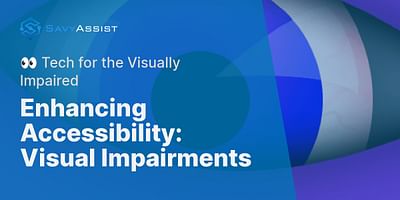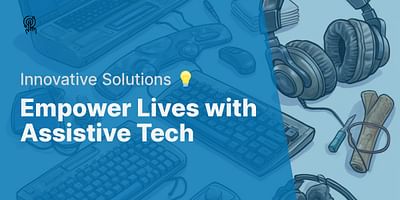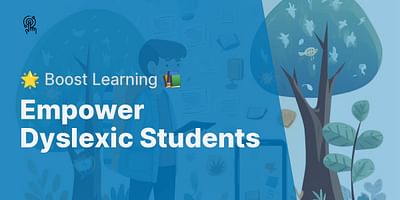Ryan is a seasoned software engineer with a passion for accessibility. With an impressive portfolio of projects focused on rendering technology more user-friendly for individuals with disabilities, he continuously seeks innovative solutions to enhance user interaction. His expertise spans from the development of screen readers and one-handed keyboards to speech-to-text software.
Assistive technology can have a profound impact on the lives of people with disabilities, empowering them to overcome barriers and participate fully in various aspects of life. Whether it's in education, employment, communication, or daily activities, assistive technology offers a range of benefits that can enhance independence, accessibility, and overall quality of life.
1. Access to Information: Assistive technology, such as screen readers, enables individuals with visual impairments to access written content on computers, tablets, and smartphones. These software applications use synthetic speech or braille displays to convert text into audible or tactile output, allowing users to read books, browse the internet, and engage with digital content.
2. Communication and Expression: For individuals with speech impairments, speech-to-text software provides a means to communicate effectively. By converting spoken words into written text, these applications enable users to participate in conversations, write emails, and even control their devices using voice commands. Conversely, text-to-speech software allows individuals with hearing impairments to "listen" to written content, making communication more accessible.
3. Learning and Education: Assistive technology plays a crucial role in supporting students with disabilities in their educational journey. For individuals with dyslexia or reading difficulties, text-to-speech software can help by reading aloud text from textbooks, articles, or online resources. Similarly, speech-to-text software allows students with physical disabilities or writing challenges to dictate their thoughts and ideas, making it easier to take notes, write essays, and complete assignments.
4. Employment Opportunities: Assistive technology can open doors to employment for individuals with disabilities. One-handed keyboards, for example, are designed to accommodate individuals with limited hand mobility, allowing them to type efficiently. Screen magnifiers and screen readers assist individuals with visual impairments in accessing computer applications and software, enabling them to perform a wide range of job tasks.
5. Independent Living: Assistive technology promotes independence and autonomy in daily activities. For individuals with mobility impairments, devices like environmental control systems enable them to control lights, appliances, and other electronic devices using voice commands or switches. Additionally, smart home technology can provide assistance with tasks such as managing medication reminders, adjusting thermostats, and opening doors, enhancing overall quality of life.
6. Accessible Web Design and Mobile Apps: Web designers and app developers can incorporate accessibility features into their products, making them more inclusive for individuals with disabilities. This includes features such as alternative text for images, keyboard navigation, and captions for videos. Accessible web design and mobile apps ensure that people with disabilities can access information, services, and entertainment on an equal basis with others.
In conclusion, assistive technology has the power to transform the lives of people with disabilities by breaking down barriers and providing equal opportunities. From accessing information and communication to learning, employment, and independent living, assistive technology empowers individuals to overcome challenges and participate fully in society. By embracing the latest assistive technology, we can create a more inclusive and accessible world for everyone.















